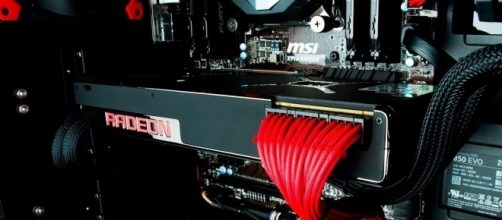A week ago, Advanced Micro Devices (AMD), in partnership with tech website Hard OCP, got a chance to test upcoming Radeon RX Vega gaming graphics card. Of course, getting compared to its leading competitor will bring more spices. As such, this AMD GPU was matched with the powerful NVIDIA GeForce GTX 1080 Ti. So what’s the verdict?
The road to SIGGRAPH 2017
The mini-tour began in Budapest where players get to play “Battlefield 1” on two almost identical PC systems except for the installed graphics card and monitor. One uses the AMD Radeon RX Vega and FreeSync monitor; the other uses the NVIDIA GeForce GTX 1080 Ti and G-Sync.
As expected, some gamers experienced “minor” system issues ranging from “a little hiccup” to not-so-good comments. Yet, there was no telling which system is which as the event organizers made sure no one can identify the monitor used and look inside the CPUs.
The event then moved to Portland, OR for this year’s edition of PDXLAN. The same PC systems were placed with a few lucky event participants able to check for themselves how the two competing graphic cards fare against one another.
This time around, there were a couple of buzzes on which PC system (placed side-by-side) uses which graphics card, though this was never officially recognized by the event organizers. For the benefit of identification, game participant’s “expert opinions” believe that the PC on the left bears the AMD GPU, while the other has the NVIDIA graphics card (see video below).
The opinions from the participants were almost a perfect split. One-third said they had a hard time identifying which PC system performs better; one-third said the PC on the left (AMD) is better while the remaining one-third says the other PC is better.
Preparation behind the scene
The man of the hour, Hard OCP editor in-chief Kyle Bennett, recently wrote how they prepared for the blind test between AMD Radeon RX Vega and NVIDIA GeForce GTX 1080 Ti. Though he did not reveal graphics card performs better or got more approval from the participants, he managed to give some important insights on what transpired before and during the blind test.
First off, he gathered some of the best and trusted gamers he knows.
The list included a whole host of eSports professionals, one formerly of id Software, gaming journalists, and a few gaming hardcore “kids”.
Second, the two identical test systems feature AMD Ryzen 7 1800X with 16GB of 2666MHz RAM, a newly formatted SSDs and then flashed the UEFI on both machines. The OS is installed was Windows 10 64-bit OS on each machine. Bennett was the one who installed the drivers for the NVIDIA system while an AMD rep installed the RX Vega driver.
Next, Bennett set up the FreeSync and G-Sync panels. The two 100Hz panels which offer excellent image quality were ASUS MX34V FreeSync display worth US$720 and ASUS PG348 G-Sync display worth US$1300.
The Hard OCP editor made sure both systems were fully shrouded and disguised so no one could tell which system was which.
They even took steps to hide the GUI from the system being used so gameplay testers wouldn't be able to identify the hardware being used.
So what’s the verdict? According to Bennett, six out of the ten participants said the gameplay experience was equal. Only one preferred the NVIDIA GTX 1080 Ti system while three chose AMD RX Vega system.


